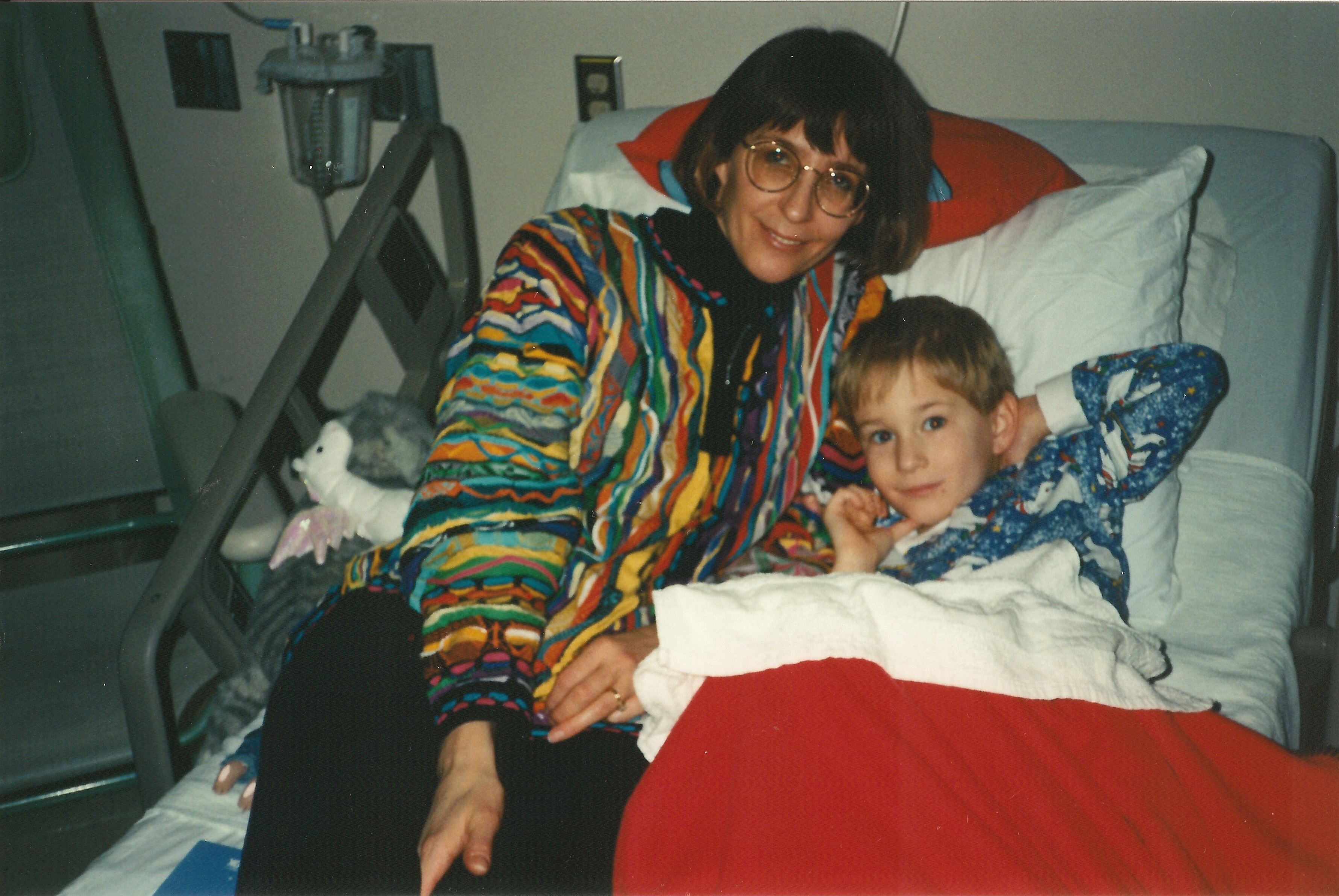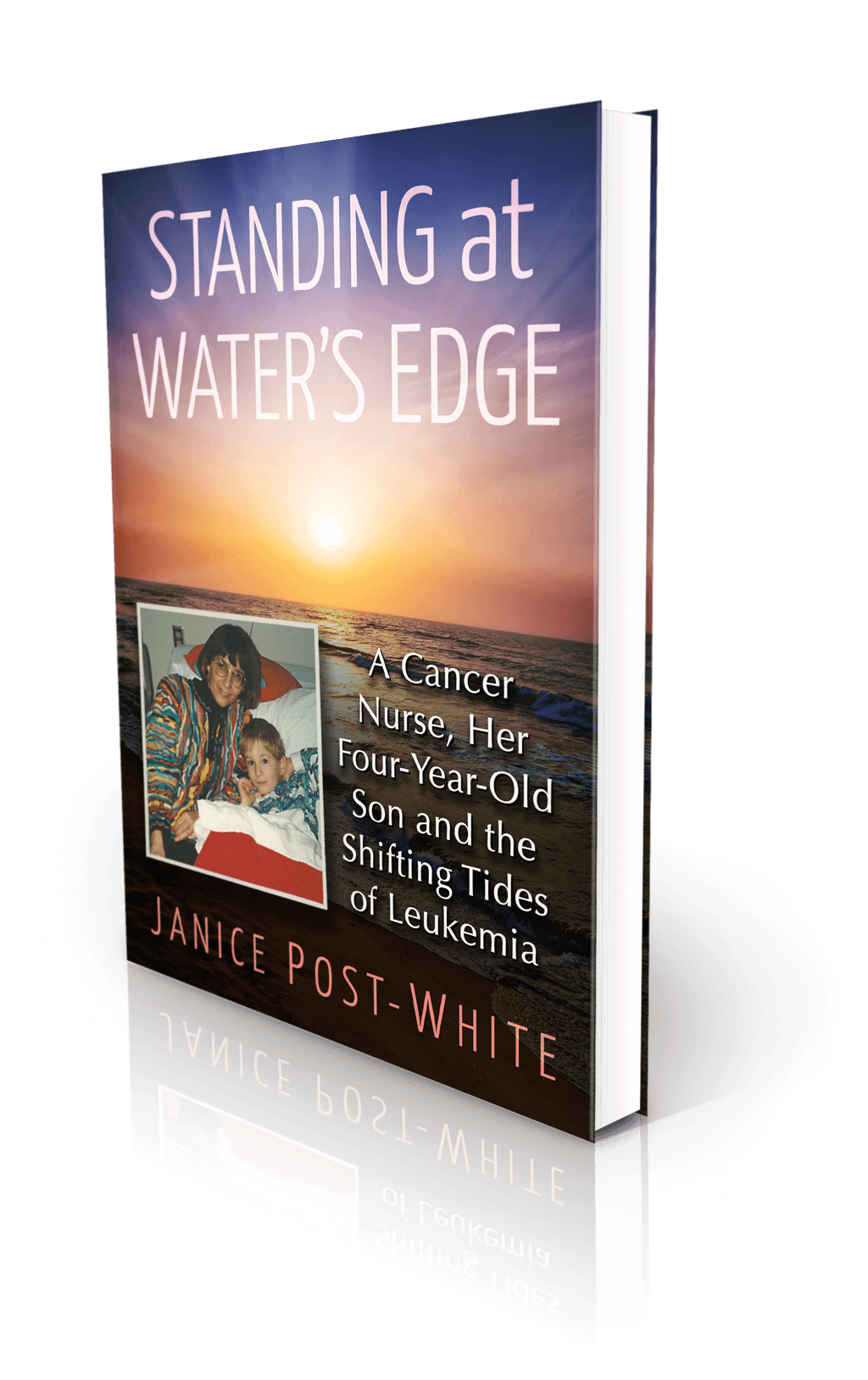
“What were his symptoms?” was the most frequently asked question after finding out that my four-year-old had leukemia. At first, I was taken aback by the question. Why did it matter? I thought. We were in treatment now, moving on—at laser speed. I had no time to pause, to process the chaotic events leading up to his diagnosis. And yet, the awareness gnawed through my reality that first night in the hospital. In Standing at Water’s Edge, I write:
After a day of seeking answers and direction, confusion cornered me. Why did I allow his symptoms to drag on for so long? I admonished myself during those dark, vulnerable hours of solitude and exhaustion. “Two months is the norm,” the oncologist had said that day. But I wasn’t the normative parent, was I? The past fall [season] had been chaotic, far from normal, but I wasn’t comforted by excuses. I had higher expectations for myself. Of course, now, after diagnosis, I could see how the symptoms pointed to cancer.
Cancer was my job, my career. Cancer was only supposed to happen to other people’s kids.
My son was diagnosed after two months of progressive symptoms and four visits to the pediatrician. It wasn’t like I ignored the symptoms. Even the doctor hadn’t figured it out. It was the precipitous drop in hemoglobin, the anemia, that alerted him.
Children present with different symptoms, and each cancer presents uniquely. The most common symptoms of leukemia in children are:
• Bruising and bleeding (low platelets affect clotting)
• Stomach-ache and poor appetite (enlarged spleen, liver, kidneys)
• Difficulty breathing (enlarged thymus or shortness of breath due to anemia)
• Frequent infections (white blood cells are immature and can’t fight viruses or bacteria)
• Lymph node swelling (neck, collarbone, armpits, groin)
• Bone and joint pain (over-crowding of blood cells in the bone marrow of long bones)
• Anemia (presenting as fatigue, paleness, weakness)
It struck me later that people asked either out of curiosity, especially since cancer in children is so much more uncommon than in adults, or because they wanted to know what to watch for when a child in their life was sick. As parents and grandparents and aunties, we want to know when it’s important enough to take time off of work, pay the extra bill, and head to the doctor one more time. In most cases, it won’t be cancer. (Approximately 1 in 285 children in the U.S. will be diagnosed with cancer before their 20th birthday).
I was just like any other parent trying to make sense of my son’s symptoms—the leg pains that came and went, but were always in both legs; the abrupt onset of fever, once a week, that crept higher and higher over the last month, but always disappeared within 24 hours; and the pain around his belly button that scrunched him up into a fetal position for twelve long hours. But that too dissipated as abruptly as its early morning onset. Disparate, seemingly unconnected symptoms, were unrelated to any physical activity, cold or respiratory symptoms, or gastro-intestinal distress. Would leukemia be your guess? It wasn’t mine, and it would be a long time before I could forgive myself for not seeing it sooner.
The good news? We still “caught” the disease before his white blood cell count ramped up to a higher risk category and required more aggressive treatment (one more day delay would have made a difference). And ALL (acute lymphoblastic leukemia) has an 80-85 percent five-year survival rate in the United States. Unfortunately, survival is lower in many other countries.
The second most common question I heard was “Is he in remission?” “Yes, but…” was my typical answer. Technically, he was in remission at day 28 of treatment (a favorable indicator), and yet he still required three more years of chemotherapy. And the reality is that two-thirds of childhood cancer survivors will develop treatment-related late-effects as adults, such as heart disease, second cancers, endocrine and hormonal disruption, among others, depending on their specific treatment.
For now, we are grateful for survival and life. We are optimistic that although childhood cancer incidence continues to rise, and it remains the #1 disease-related cause of death for children in the United States and many other countries, more children are surviving their cancer and establishing meaningful and productive lives. We honor the friends we have lost and we celebrate the survivors.
For one such inspirational story, check out Sofia Holub on Healthline or her website/blog.
Thank you for reading and caring.
In health,
Janice

About the Book
Janice Post-White’s memoir is a story about a cancer nurse who thought she knew what life and death were about.
Then her 4-year-old son got leukemia.
This heart-wrenchingly real but inspiring book shines a light on the life-affirming discoveries that can be made when one is forced to face death—and bravely chooses to face fears.
ON SALE DECEMBER 3, 2021
2022 First Place Award from the American Journal of Nursing Book of the Year in the category of Consumer Health and Third Place in Creative Works
Finalist in Health/Cancer from the American Book Fest Best Book Awards, the International Book Awards, and the Eric Hoffer Book Awards



